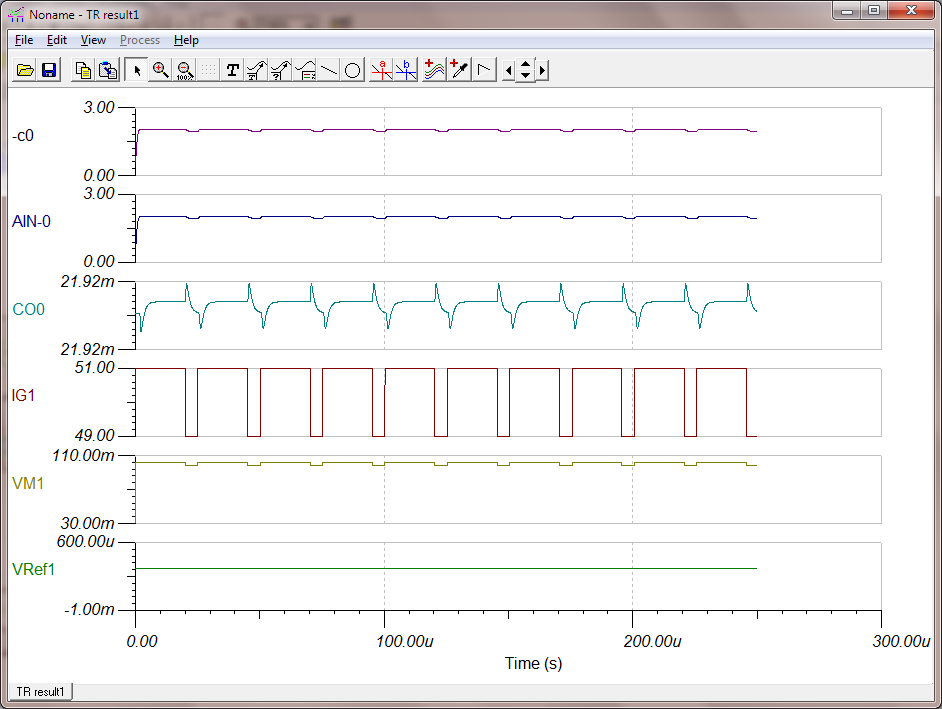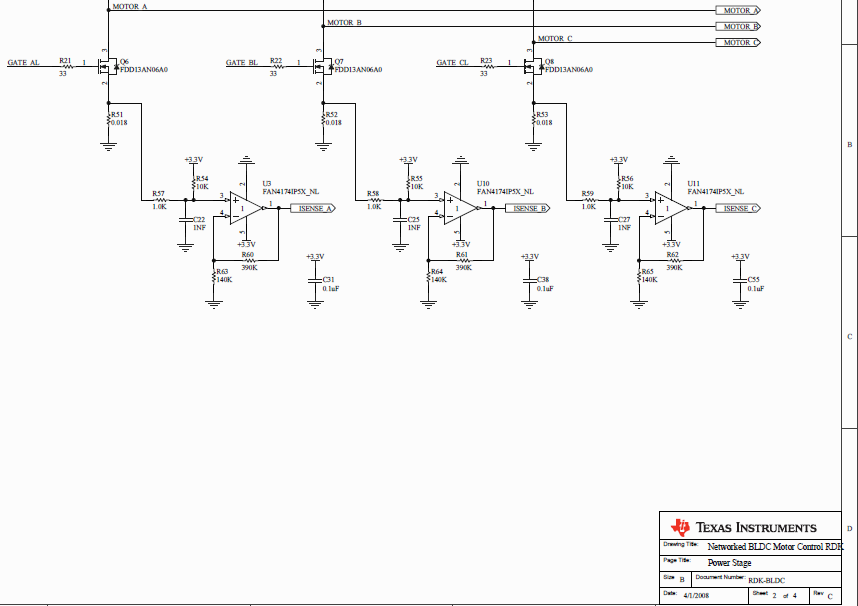Other Parts Discussed in Thread: INA282,
Previous thread last two Tina models, indicate linear output via REF=GND. However the real output is not as linear and crosses 0V >-21mV. Also the idle Real 3 output/s got real quiet <6mV noise, very impressive. Oddly REF=GND is not controlling Real differential amp/s linear region as Tina Spice model indicates it does very well. Point being how can we trust the Spice results when 240 Real results do not produce the same linear output? Asked last thread what would be a better circuit configuration to produce better linear region of the entire shunt signal (REF=GND) as plots indicated possible for (-IN=510k)?
Scope capture of Real linear results below differs greatly from Spice projection! Yet output signal has the full ± (expected) signature not being produced via -IN tied directly to ground. Oddly modifying center & last sensors respectively reduced the digital output to more closely match an DC supply 100A bar (external) digital current monitor. When 3 sensors were modified (-IN=510k) the digital results were way off from external monitor digital readout and 3-240's could not detect rotor loading other than by PWM drive due to the non-linear output signal (1st,2nd captures). It would seem from Spice versus Real testing the 240 has production issues not being checked for after manufacture! Tina model used a sine wave current generator to produce excellent linear results (-IN=510k) versus Real captures below of sharp pulsed PWM signal driving the input.
Real results CH1=shunt, CH2=240: Note shunt ± (current) signature is very much present but not so linear as Spice predicted. Note also the distinct current envelope is not broken up as via -IN=GND (last capture).
-IN=GND:




